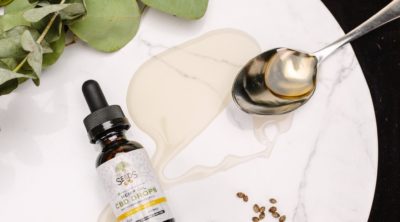
Pectin is found in the plant cell wall. It is one of the most important substances in jams and jellies as it increases the consistency and behaves as a thickening agent. Find out more about this natural and beneficial substance which is abundantly found in plants.
Do you know what gives jams and jellies their gooey gel form? It’s pectin. Pectin is a natural complex carbohydrate which is found in the cell wall of all plants. However, the amount of pectin varies from plant to plant. Pectin was isolated by French chemist and pharmacist, Henri Braconnot in the year 1825. He even described about its usefulness and properties. Soon after the isolation, it was taken up by manufacturers and was used in food item and medicines. This gave a kick start to the productivity and consumption of pectin.
Where is Pectin Found?
Pectin is found in the plant cell wall. The function of pectin is to regulate the water flow between the cells and to give rigidity to the cell. It is mostly found in the non woody part of the plant like the fruit. The amount of pectin depends upon the species, variety, plant part, maturity, growth, structure, etc. As the fruit of any plant starts ripening, the pectin in the fruit starts breaking down and the fruit becomes soft. Let’s take the example of an apple. The crispy and crunchy apples if kept for a long time lose their crispiness and gets mushy and soft. This shows that the rigidity of the cell wall is lost as the pectin has been broken down by the enzymatic actions.
Source of Pectin
As we have discussed in the above section, pectin is found in the plant cell wall. The amount of pectin is very high in citrus fruits and legumes. Approximately 55 to 65% of the dietary fiber in citrus fruits is pectin. Some of the fruits which have high amount of pectin are apple, grapefruit, orange, apricot, cranberries, sour plums, quinces, gooseberries and red currants. Banana, beets, potatoes, carrots and cabbage also have a considerable amount of pectin. The following table will help you to understand the content of pectin in some of the plants.
| Food Source | Pectin content (gram/200 gram) |
| Carrot | 1.6 |
| Peach | 1.4 |
| Peas | 1.2 |
| Apple | 1.0 |
| Beans | 0.8 |
| Potato | 0.6 |
How is Pectin Extracted?
Most of the pectin is found in the peels of the fruits and its content is very high in citrus fruits. Hence, the pectin manufacturing companies take apple pomace or orange peels from the juice producing companies. They get them dried and crushed to a powdered form. Earlier, pectin was sold in a liquid form but later on it was made into powder form to increase its shelf life. It is tasteless, hence, it is widely used in many products as a thickening product too.
Benefits of Pectin
Pectin is used in many recipes and has health benefits too. Find out the uses and benefits of pectin in the points given below.
- The chemical properties of pectin makes it a good gelling and thickening substance. It bonds with water very nicely and forms a gel. Because of this reason it is always in high demand in the industrial yogurt, cakes, fruit jelly, ketchup, jams etc. Organic pectin and apple pectin are very commonly used in making many pectin recipes.
- It is considered best for people suffering from irritable bowel syndrome and diarrhea. It behaves as a thickening agent in the gut and is also used in many medicines which are used for an upset stomach, heartburn and constipation.
- It is used in certain cough drops to help relieve the irritating throat by coating the throat with a pectin layer.
- Pectin is known to lower the LDL cholesterol and hence, it is recommended for heart patients too.
- Stimulating the immune system, regulating insulin, healing wounds, etc., are some of the other benefits of pectin.
- It is also used in many cosmetic products for hair and also as a moisturizer.
So, now as you know about the benefits of pectin, you can include it in your diet. If you have pectin allergy then you can use products which contain pectin substitutes like agar, gelatin, tapioca, etc. as a thickening agent.


